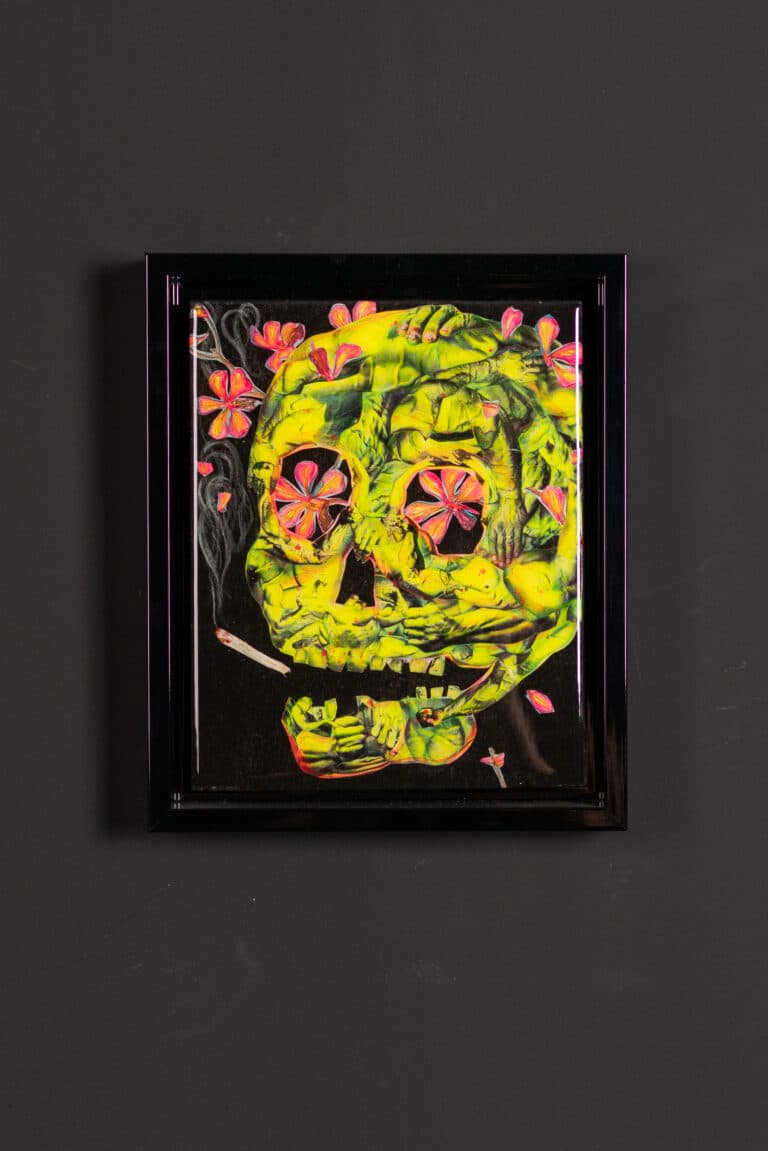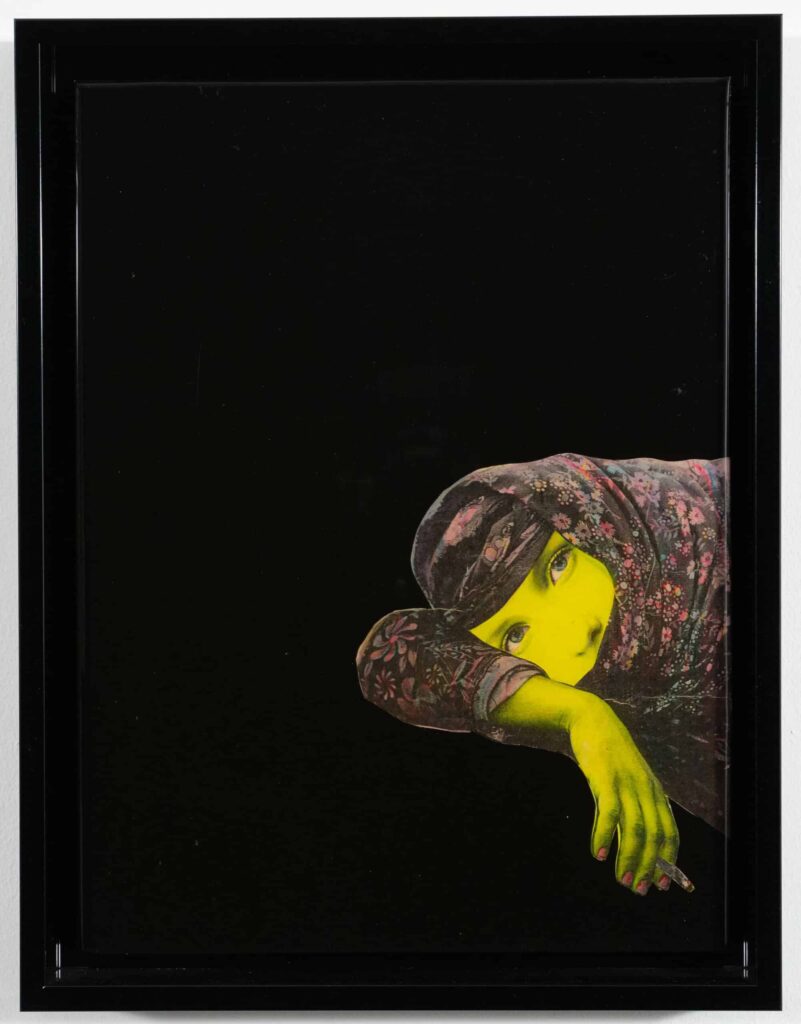Who is Judith Supine?
New York-based artist Brendan Fagan, who performs under the pseudonym Judith Supine, his mother's name, is known for his complex collages, which he makes from magazines and old papers that are no longer used. The works emphasise the dark side of advertising, mixing the grotesque and the imitative to create surreal compositions before a layer of varnish is applied to the surface.
How does Supine work?
Supine was inspired by book covers. His installations and public works constantly attract the attention of the public because of the large surreal collages, mostly showing distorted faces made of a combination of dark black paint and neon-coloured elements.
To create his unique pieces, Supine often uses found materials and cuttings from old books and magazines. He rearranges the found elements to create extraordinary collages. Once a piece fits his vision, it is digitally enlarged, printed in black and white and vividly coloured with acrylics in the studio. The resulting collages are dynamic and poignant, often exploring themes of death and fetishism.
Judith Supine in the "25 Years" exhibition at MUCA Munich
The works "Untitled (green portrait, girl with scarf)" and "East of Eden" by Supine were shown live at the MUCA anniversary exhibition (06.10.2022 - 10.09.2023) in Munich.
Where else could Supine's works be seen?
In public spaces, Supine has pasted these images on the streets of New York City and also realised urban interventions, such as hanging a 50-foot-long work from the Manhattan Bridge in 2007. In this particularly bold project, Supine managed to impose his work on the New York City landscape on a grand scale, resulting in a surreal enrichment of the skyline.
His work has also been presented in many galleries in the United States and beyond, including Jonathan LeVine Gallery and English Kills Art Gallery in New York, and Circle Culture Gallery in Berlin. His solo exhibition "Golden Child" was on view at Mecka Gallery in Brooklyn in March 2014. Known for his enticing collages, Judith Supine has taken the position of a reclusive observer of contemporary society and is a firmly established figure, especially in the New York art scene.

